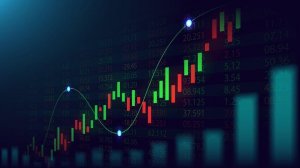In the previous lesson, we learned how, where, and when you can access the Commitment of Traders report. In this lesson, we will discuss the elements contained in the COT report. The CFTC prepares four COT report types: the Legacy Report, the Supplemental Report, the Disaggregated Report, and the Traders in Financial Futures report. For forex traders, the Legacy and the Traders in Financial Futures reports are of most importance.
The Legacy Report
The Legacy report is categorized by different exchanges. Forex traders pay attention to the reports from the Chicago Mercantile Exchange. The Legacy reports have categories for only futures report and a combination of both futures’ and options report. The open interest positions that are reportable are categorized into two: non-commercial and commercial traders.
The Traders in Financial Futures (TFF) Report
This report contains financial contracts, including the US Treasuries, currencies, the VIX, and Eurodollars. Like the Legacy report, it has two categories; only futures report and a combination of both futures’ and options report. The open interest positions in the TFF report are categorized into four: leveraged funds; dealer/intermediary; asset manager/institutional; and other reportable.
Understanding Terms used in the COT Report
Open Interest: The totality of all futures and options contracts that have not yet been executed but are yet to be offset by exercise, delivery, or transaction.
Reportable Positions: these are open interests that are equal to or exceed the reporting level set by the CFTC. These positions are reported to the CFTC by foreign exchange brokers, futures commission merchants, and clearing members. The reportable positions account for about 70% to 90% of all open interests in a given market.
Nonreportable positions: are calculated by subtracting the reportable positions from the total open interests in a given market. The traders involved in nonreportable positions are unknown, as is their classification on whether they are commercial or non-commercial. These are mainly small-scale retail traders.
Commercial Traders: are traders who participate in the futures and options market to hedge their core business activities. In forex futures, commercial traders seek to offset the risks of the spot market. The CFTC has set the definition that qualifies a commercial trader under Regulation 1.3 (z). Commercial traders do not seek to take possession of the assets underlying a futures contract.
Non-commercial Traders: are also known as large speculators. These traders participate in the futures market primarily as an investment by speculating on price movements. They have no intentions of taking ownership of the underlying asset to profit from the price difference.
Changes in commitments from previous reports: shows the difference between the data in the current and the immediate previous publication of the report.
Number of Traders: show the reportable traders in each category. For each category, a trader is counted if they have an open position. The number of traders in each category can exceed the total number of traders because a single trader can have open positions in different categories. [wp_quiz id=”89679″]





